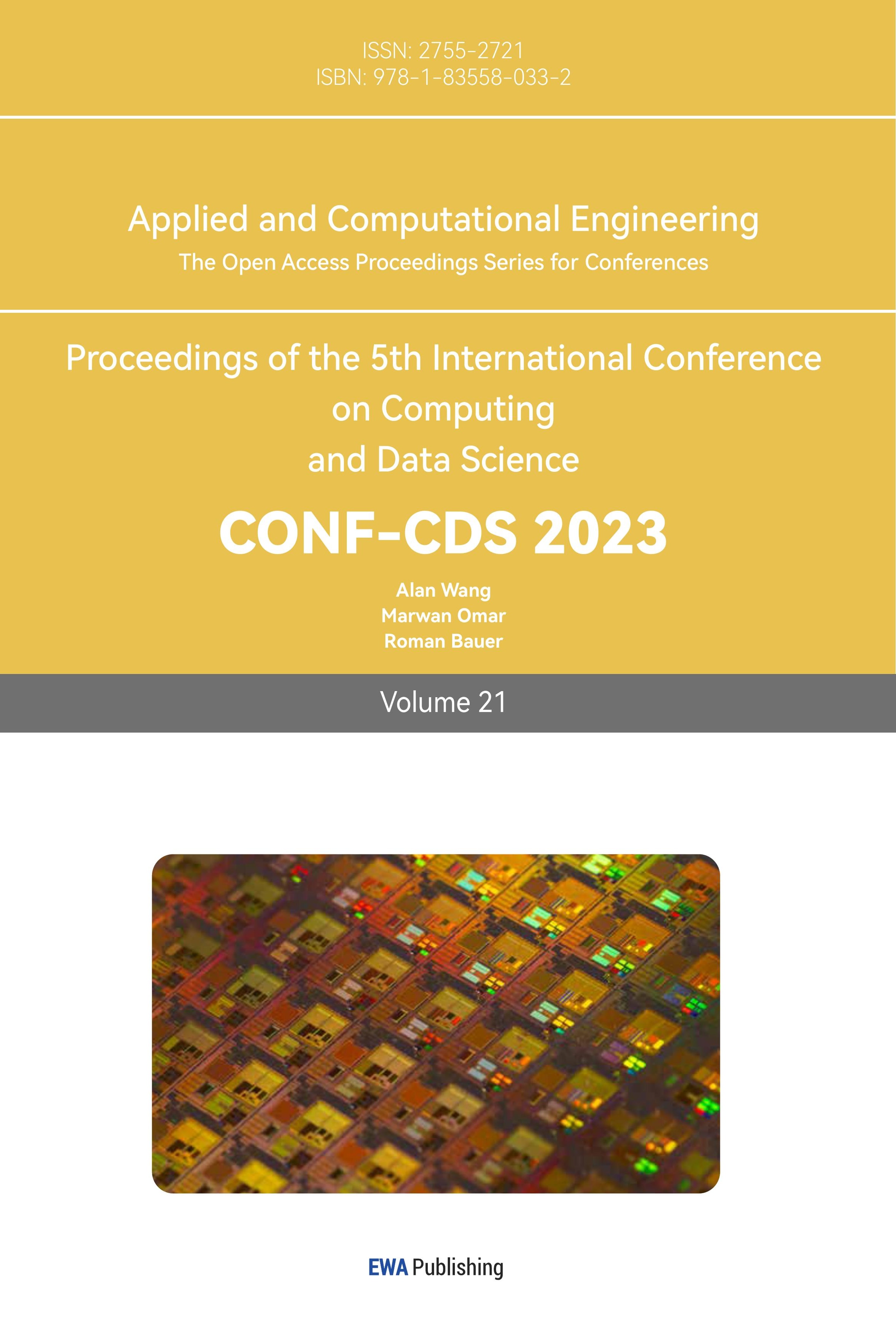References
[1]. C.Reep and B.Benjamin, “Skill and Chance in Association Football”, Journal of the Royal Statistical Society, vol 131 , pp 581-585, 1968.
[2]. M.J.Maher, “Modelling association football scores”, Statistica Neerlandica, vol 36, pp 109-118,1982.
[3]. H.Rue S.Martino and N.Chopin, “Approximate Bayesian inference for latent Gaussian models by using integrated nested Laplace approximations”, Journal of the Royal Statistical Society: Series B (Statistical Methodology), vol 71(2), pp 319-392, 2009.
[4]. P.Promvijittrakarn and T.Charoenpong, “A method of soccer-team identification by histogram feature vector and support vector machine”, International Workshop on Advanced Imaging Technology, vol 12592, p 12, 2023.
[5]. M.Şahin and R.Erol, “A Comparative Study of Neural Networks and ANFIS for Forecasting Attendance Rate of Soccer Games”, Mathematical and Computational Applications, vol 22, p 43, 2017.
[6]. A.Decuyper A.Troncoso and D.Martens, “Forecasting Association Football Match Outcomes in a Simulated Environment: A Neural Network Approach”, Journal of Sports Analytics, vol 5(2), pp 85-96, 2019.
[7]. Bloomfield Polman and O’Donoghue, “The ‘Bloomfield Movement Classification’: Motion Analysis of Individual Players in Dynamic Movement Sports”, International Journal of Performance Analysis in Sport, vol 4, pp 20-31, 2004.
[8]. M.J.Dixon and S.G.Coles, “Modelling Association Football Scores and Inefficiencies in the Football Betting Market”, Journal of the Royal Statistical Society , vol 46(2), pp 265-280, 1997.
[9]. O.Hubáček G.Šourek and F.Železný, “Learning to predict soccer results from relational data with gradient boosted trees”, Springer, vol 108, pp 29-47, 2019.
[10]. D.Berrar P.Lopes and W.Dubitzky, “Incorporating domain knowledge in machine learning for soccer outcome prediction”, Springer, vol 108, pp 97-126, 2019.
[11]. Y.Cho J.Yoon and S.Lee, “Using social network analysis and gradient boosting to develop a soccer win–lose prediction model”, Engineering Applications of Artificial Intelligence, vol 72 pp 228-240,2018.
[12]. H. Rue and Øyvind Salvesen, “Focus on Sport: Prediction and Retrospective Analysis of Soccer Matches in a League”, Journal of the Royal Statistical Society, vol 49, pp 399-418, 2000.
[13]. D.Berrar P. Lopes J.Davis and W.Dubitzky, “Guest editorial: special issue on machine learning for soccer”, Springer, vol 108, pp 1-7, 2019.
Cite this article
Song,J. (2023). Research on soccer prediction model based on machine learning combined with domain knowledge. Applied and Computational Engineering,21,161-168.
Data availability
The datasets used and/or analyzed during the current study will be available from the authors upon reasonable request.
Disclaimer/Publisher's Note
The statements, opinions and data contained in all publications are solely those of the individual author(s) and contributor(s) and not of EWA Publishing and/or the editor(s). EWA Publishing and/or the editor(s) disclaim responsibility for any injury to people or property resulting from any ideas, methods, instructions or products referred to in the content.
About volume
Volume title: Proceedings of the 5th International Conference on Computing and Data Science
© 2024 by the author(s). Licensee EWA Publishing, Oxford, UK. This article is an open access article distributed under the terms and
conditions of the Creative Commons Attribution (CC BY) license. Authors who
publish this series agree to the following terms:
1. Authors retain copyright and grant the series right of first publication with the work simultaneously licensed under a Creative Commons
Attribution License that allows others to share the work with an acknowledgment of the work's authorship and initial publication in this
series.
2. Authors are able to enter into separate, additional contractual arrangements for the non-exclusive distribution of the series's published
version of the work (e.g., post it to an institutional repository or publish it in a book), with an acknowledgment of its initial
publication in this series.
3. Authors are permitted and encouraged to post their work online (e.g., in institutional repositories or on their website) prior to and
during the submission process, as it can lead to productive exchanges, as well as earlier and greater citation of published work (See
Open access policy for details).
References
[1]. C.Reep and B.Benjamin, “Skill and Chance in Association Football”, Journal of the Royal Statistical Society, vol 131 , pp 581-585, 1968.
[2]. M.J.Maher, “Modelling association football scores”, Statistica Neerlandica, vol 36, pp 109-118,1982.
[3]. H.Rue S.Martino and N.Chopin, “Approximate Bayesian inference for latent Gaussian models by using integrated nested Laplace approximations”, Journal of the Royal Statistical Society: Series B (Statistical Methodology), vol 71(2), pp 319-392, 2009.
[4]. P.Promvijittrakarn and T.Charoenpong, “A method of soccer-team identification by histogram feature vector and support vector machine”, International Workshop on Advanced Imaging Technology, vol 12592, p 12, 2023.
[5]. M.Şahin and R.Erol, “A Comparative Study of Neural Networks and ANFIS for Forecasting Attendance Rate of Soccer Games”, Mathematical and Computational Applications, vol 22, p 43, 2017.
[6]. A.Decuyper A.Troncoso and D.Martens, “Forecasting Association Football Match Outcomes in a Simulated Environment: A Neural Network Approach”, Journal of Sports Analytics, vol 5(2), pp 85-96, 2019.
[7]. Bloomfield Polman and O’Donoghue, “The ‘Bloomfield Movement Classification’: Motion Analysis of Individual Players in Dynamic Movement Sports”, International Journal of Performance Analysis in Sport, vol 4, pp 20-31, 2004.
[8]. M.J.Dixon and S.G.Coles, “Modelling Association Football Scores and Inefficiencies in the Football Betting Market”, Journal of the Royal Statistical Society , vol 46(2), pp 265-280, 1997.
[9]. O.Hubáček G.Šourek and F.Železný, “Learning to predict soccer results from relational data with gradient boosted trees”, Springer, vol 108, pp 29-47, 2019.
[10]. D.Berrar P.Lopes and W.Dubitzky, “Incorporating domain knowledge in machine learning for soccer outcome prediction”, Springer, vol 108, pp 97-126, 2019.
[11]. Y.Cho J.Yoon and S.Lee, “Using social network analysis and gradient boosting to develop a soccer win–lose prediction model”, Engineering Applications of Artificial Intelligence, vol 72 pp 228-240,2018.
[12]. H. Rue and Øyvind Salvesen, “Focus on Sport: Prediction and Retrospective Analysis of Soccer Matches in a League”, Journal of the Royal Statistical Society, vol 49, pp 399-418, 2000.
[13]. D.Berrar P. Lopes J.Davis and W.Dubitzky, “Guest editorial: special issue on machine learning for soccer”, Springer, vol 108, pp 1-7, 2019.









